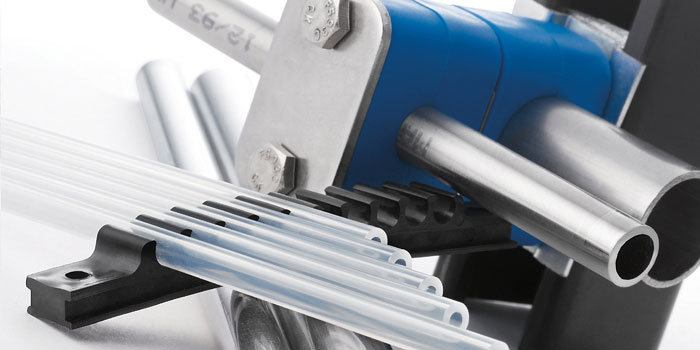Swagelok Northwest (US) Tubing Checklist

There are five main parts to a tube fitting connection: the nut, back ferrule, front ferrule, and fitting body. Swagelok manufactures these parts to exacting standards and tolerances at the factory. The final component is tubing. We don't provide tubing as a manufacturer, but we can give you some helpful information to improve the quality of your tube fitting connections.
Setting the tubing standards
There are many standards that apply to tubing, but we will focus on the stainless-steel specs. Stainless steel makes up the bulk of what we see in the Pacific Northwest.
ASTM International sets many standards for tubing. When you get your tubing, it is good practice to check the lay line on the tubing for the ASTM manufacturing standard. It is printed on the tube, along with the heat number for the tubing.
ASTM A269 or A213 are common grades for stainless steel tubing. A269 refers to the ASTM A1016 General Requirements. These require that the finished tube be reasonably straight and have smooth ends free of burrs.
ASTM A269 also gives guidelines for the tolerances of the tubing OD. It is +- 0.005in. These guidelines allow an ovality two times the OD tolerance.
Even with the ASTM specs, standards vary. and there can be variations in tubing quality. Tubing quality often depends on the integrity and quality of the tubing supplier.
Tubing quality checklist
Before you install a piece of tubing into a Swagelok fitting, take a moment to review this checklist.
- Is the tubing seamless or welded? Check welded tubing for signs of corrosion or pitting along the weld bead. Can you see the weld bead on the OD? If yes, this may create issues later.
- What is the hardness of the tubing? For best performance with a Swagelok fitting, choose tubing equal to or less than a Rockwell hardness of 90 HRB.
- Is the surface finish free of scratches? As the tube fitting seals on the OD of the tubing, scratches can result in potential leak paths.
- What is the ovality of the tubing? Don't force oval tubing into a tube fitting, it may damage some of the components.
- Check the OD and ID to make sure they are free of burrs. A burr on the OD can scratch and damage sealing components. A burr on the ID can get flushed downstream and damage O-rings or other seals in valves, regulators, or other components.
- Check the wall thickness to make sure it is enough for the pressures of your system.
- Check that the wall thickness is consistent all the way around the tubing. You don't want a thick wall on the top of the tube and thinner wall on the bottom.
If you have any questions about the quality of the tubing you are using, please contact your Swagelok Northwest (US) account manager. We are here to help improve the consistent quality of your tube fitting connections.
